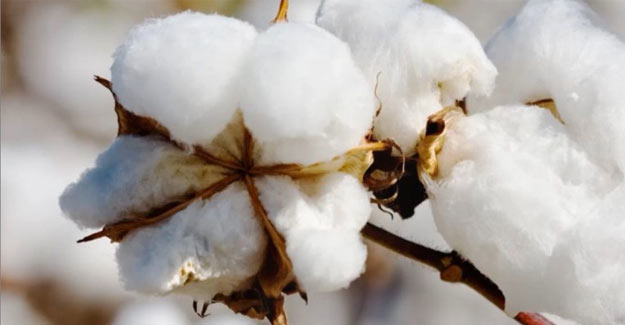
Reversing Pest Resistance In Biotech Cotton: The Secret Is In The Mix
Interbreeding Bt cotton plants with non-Bt plants yields a seed mix that has resulted in 96% pest suppression and 69% fewer insecticide sprays in the Yangtze River Valley in China. This strategy has pushed pest resistance to Bt cotton below detection levels in the region, benefiting millions of small-scale farmers.
Insect pests that are rapidly adapting to genetically engineered crops threaten agriculture worldwide. A new study published in the Proceedings of the National Academy of Sciences reveals the success of a surprising strategy for countering this problem: Hybridising genetically engineered cotton with conventional cotton reduced resistance in the pink bollworm, a voracious global pest.
The study is the result of a long-standing collaboration between researchers at the University of Arizona and in China. Over 11 years, they tested more than 66,000 pink bollworm caterpillars from China's Yangtze River Valley, a vast region of southeastern China that is home to millions of smallholder farmers.
According to the study's authors, this is the first reversal of substantial pest resistance to a Bt crop. "We have seen blips of resistance going up and down in a small area," said senior author Bruce Tabashnik, a Regents' Professor in the UA's College of Agriculture and Life Sciences. "But this isn't a blip. Resistance had increased significantly across an entire region, then it decreased below detection level after this novel strategy was implemented."
Cotton, corn and soybean have been genetically engineered to produce pest-killing proteins from the widespread soil bacterium Bacillus thuringiensis, or Bt. These Bt proteins are considered environmentally friendly because they are not toxic to people and wildlife. They have been used in sprays by organic growers for more than 50 years, and in engineered Bt crops planted by millions of farmers worldwide on more than 1 billion acres since 1996. Unfortunately, without adequate countermeasures, pests can quickly evolve resistance.
The primary strategy for delaying resistance is providing refuges of the pests' host plants that do not make Bt proteins. This allows survival of insects that are susceptible to Bt proteins and reduces the chances that two resistant insects will mate and produce resistant offspring. Before 2010, the U.S. Environmental Protection Agency required refuges in separate fields or large blocks within fields. Planting such non-Bt cotton refuges is credited with preventing evolution of resistance to Bt cotton by pink bollworm in Arizona for more than a decade. By contrast, despite a similar requirement for planting refuges in India, farmers there did not comply and pink bollworm rapidly evolved resistance. The ingenious strategy used in China entails interbreeding Bt cotton with non-Bt cotton, then crossing the resulting first-generation hybrid offspring and planting the second-generation hybrid seeds. This generates a random mixture within fields of 75% Bt cotton plants side-by-side with 25% non-Bt cotton plants. "Because cotton can self-pollinate, the first-generation hybrids must be created by tedious and costly hand pollination of each flower," said Tabashnik, who also is a member of the UA's BIO5 Institute. "However, hybrids of the second generation and all subsequent generations can be obtained readily via self-pollination. So, the hybrid mix and its benefits can be maintained in perpetuity."
Tabashnik calls this strategy “revolutionary” because it was not designed to fight resistance and arose without mandates by government agencies. Rather, it emerged from the farming community of the Yangtze River Valley. While most previous attention has focused on the drawbacks of interbreeding between genetically engineered and conventional plants, the authors point out that the new results demonstrate gains from such hybridisation.
"Our results show 96% pest suppression and 69% fewer insecticide sprays," Tabashnik added. "This study gives a new option for managing resistance that is very convenient for small-scale farmers and could be broadly helpful in developing countries like China and India," explained coauthor Kongming Wu, who led the work in China and is a professor in the Institute of Plant Protection in Beijing.
Textile Excellence
If you wish to Subscribe to Textile Excellence Print Edition, kindly fill in the below form and we shall get back to you with details.








